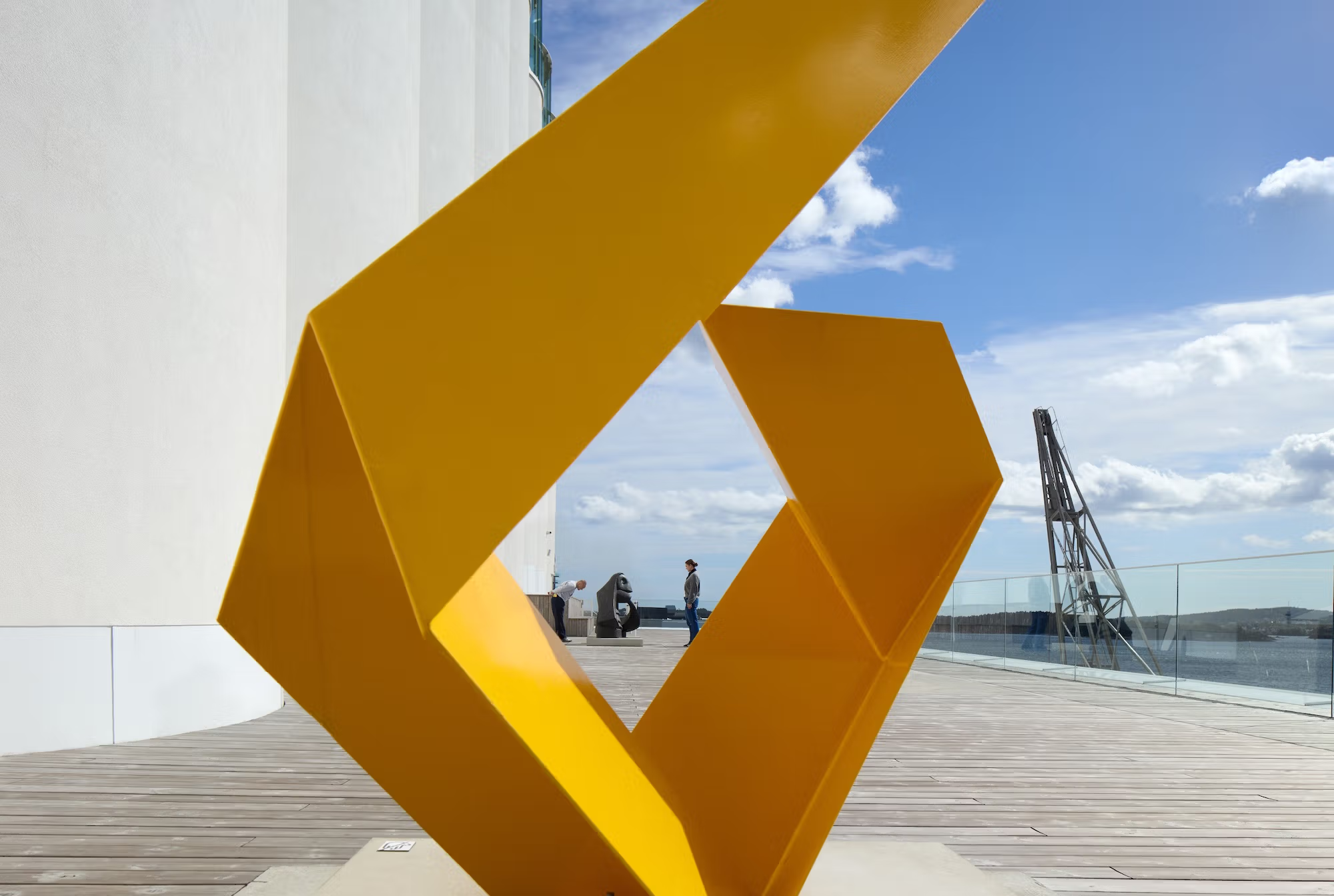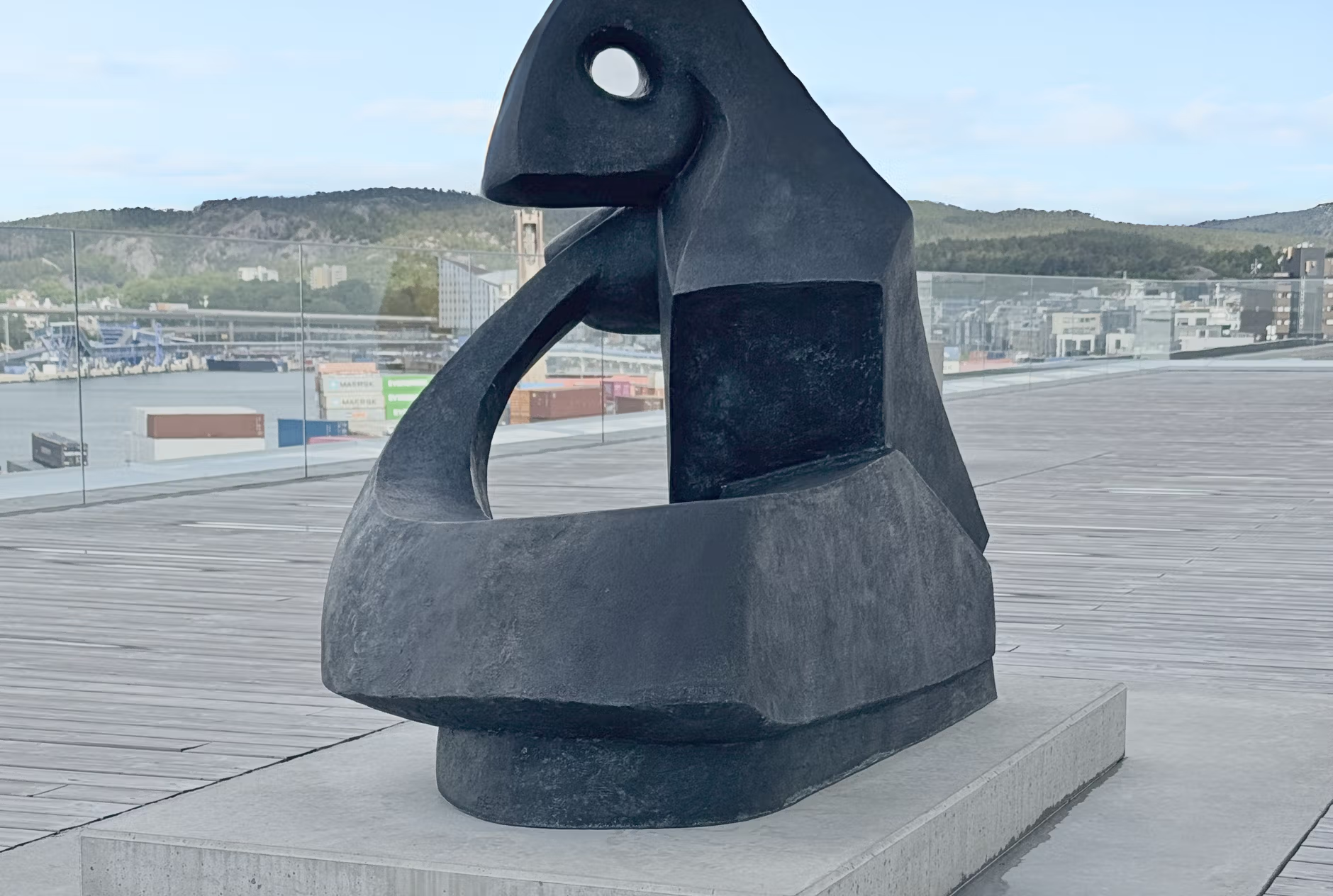Lars-Gunnar Nordström (FIN, 1924-2014) was one of the leading pioneers of concrete, non-representational art in Finland. He focused on three basic elements in his works: colour, form, and line. These elements were to be in a mutually dependent relationship, and the works were not to refer to anything beyond themselves and the interplay that arose. Nordström was originally trained in interior design and was considered a self-taught artist. Nevertheless, he was one of Finland's foremost in his field and was the first to exhibit concrete works in his home country.
In both his paintings and sculptures, Nordström was considered a composer, but where the notes were replaced by sounds of precisely colour, form, and line. For Nordström, it was as if the work with good compositions and form never ceased, and he was known for continually folding small figures of note papers and receipts. Perhaps this was also how he was inspired to create the sculpture Sekvens?

Danish artist Ejler Bille (DK, 1910-2004) was one of the foremost pioneers of abstract art in Denmark in the early 20th century. In the 1930s, he was involved in the artist group linien along with Sonja Ferlov Mancoba, Vilhelm Bjerke-Petersen, and Richard Mortensen. Together, they promoted an abstract-surrealist expression through both exhibitions and a magazine of the same name. In the 1940s, Bille became a central figure in the international artist group CoBrA (Copenhagen, Brussels, Amsterdam).
Although Bille is perhaps best known for his paintings today, it was with sculpture that he first made his mark. His earliest sculptures depicted animals and birds, reflecting his interest in nature and its wildlife. Bille has been described as a poetic artist, both for the large amounts of texts he produced about contemporary new artistic expressions and for the tenderness he put into his work with visual art. The title Saurian can be translated to "lizard." The sculpture appears almost mystical, yet without being frightening or unpleasant. It has a tenderness about it, with its head turned down, seeking contact with the viewer.

Marie Buskov (DK/NO, 1980) is interested in architecture and spatiality, whether it is painting, sculpture, or collage she works with. In her works, she explores the relationship between two-dimensional images and three-dimensional forms. At the very beginning of her career, she used photography as a starting point for her works. She photographed the rooms she was going to exhibit in, cut out details such as door openings, mouldings, and sills, which she enlarged and installed in the room they were photographed from. Through the distortion of perspective, she explored how the audience experienced the room in a new way. In recent years, she has further developed the process in her work with sculptures that are folded and folded againalmost beyond recognition.
The sketch for this sculpture is drawn by hand, then processed into a three-dimensional form through a computer program. It has then been cast in bronze and given a layer of silkysmooth black patina. Thoughts can be drawn to a constructivist tradition, where we see a play of lines dancing in the air and framing the landscape beyond. The title of the work indicates that it is an open form rather than something closed. The sculpture is also a play with perspective, with exciting and sharp twists in its lines, which contribute to challenging our reading of it.